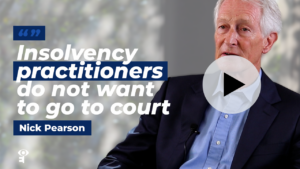Mediation: Resolving Insolvency Disputes Through Dialogue
Overview
Mediator: Nick Pearson
Sector: Insolvency
Outcome: Through mediation, the insolvent company’s director and liquidator reached a mutually beneficial settlement, avoiding costly litigation and preserving relationships.
The Challenge: When a company enters insolvency, disputes often arise between stakeholders – directors, creditors, and liquidators. These disputes can be costly and time-consuming, especially when they escalate to litigation. This case study explores how mediation can be a powerful tool for resolving such disputes, leading to faster and more amicable outcomes.
The Dispute: The liquidator suspected the director of preferential payments, asset undervaluation, and misfeasance, seeking a significant sum in compensation. The director remained silent, leading to a potential court battle.
The Intervention: A mediator facilitates a structured dialogue between the parties.
Key Steps to Success:
- Setting the Stage: The mediator clarifies objectives, encourages openness, and emphasises the benefits of negotiation over litigation.
- Transparency and Disclosure: Encouraged by the mediator, the director presents new evidence and financial information, fostering trust and understanding.
- Open Dialogue: Both sides discuss the events and the director’s ability to pay, fostering empathy and exploring solutions.
- Reaching Agreement: The parties collaboratively arrive at a settlement that satisfies both sides’ interests.
The Impact of Mediation:
- Cost-effectiveness: Mediation avoids the high costs of litigation, benefiting both parties.
- Timeliness: Disputes are resolved faster than court proceedings, minimising disruption.
- Mutually Beneficial Outcome: The settlement reflects both parties’ needs and interests, leading to a sustainable solution.
Conclusion: This case demonstrates the effectiveness of mediation in resolving insolvency disputes. By facilitating open dialogue, fostering understanding, and encouraging creative solutions, mediation can lead to faster, more cost-effective, and amicable outcomes for all involved.



